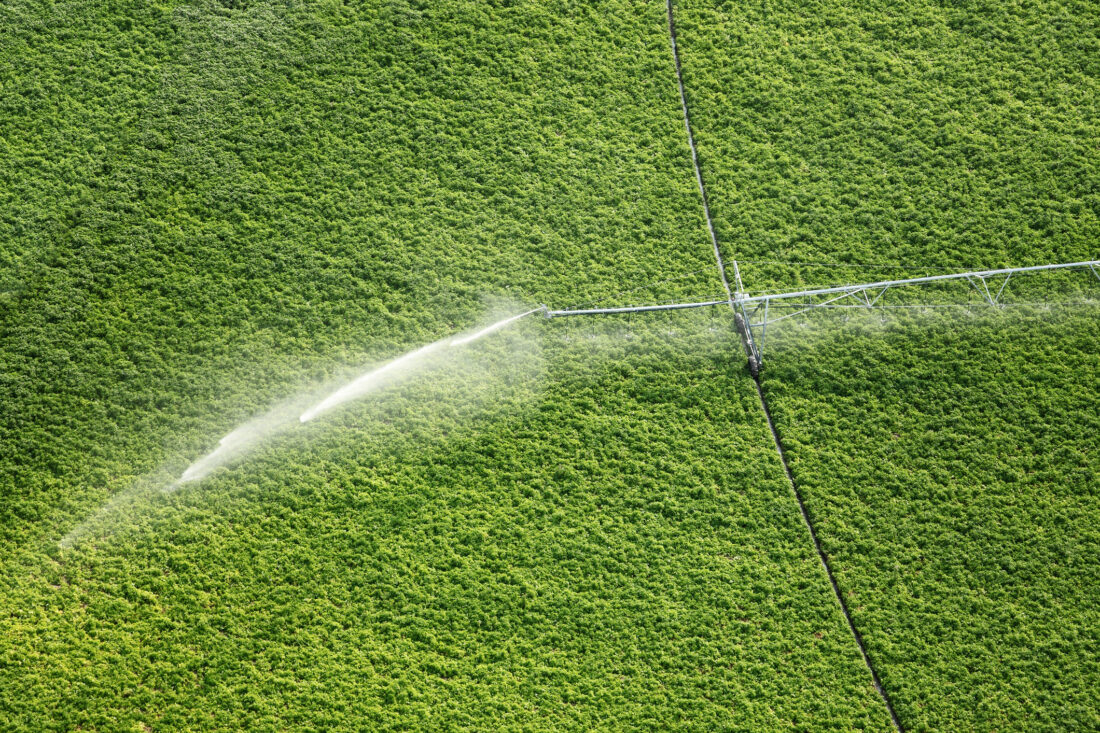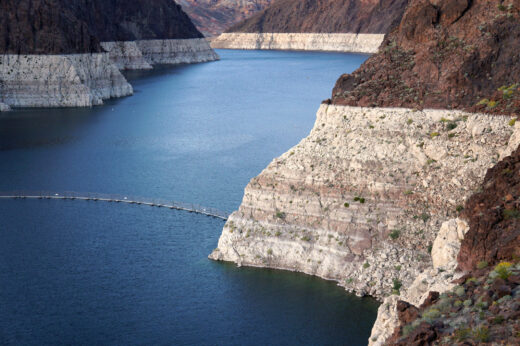
Big Ag Is Drying Up the West
By Holly Bainbridge
Staff Attorney
In the American West, water scarcity is becoming an increasingly urgent issue, with severe droughts and dwindling water supplies impacting rural communities, urban centers, and the natural environment. One of the major contributors to this crisis is industrial animal agriculture, which consumes an astonishing amount of water—more than many realize. From watering crops that feed livestock to providing drinking water for animals themselves, the water demands of factory farms are straining already overburdened aquifers and rivers.
While water scarcity has long been an issue in the West, it is getting worse. Climate change is intensifying droughts in the region by increasing temperatures, leading to higher evaporation rates and reduced precipitation and snowpack. Meanwhile, not enough is being done to conserve water resources and build drought resilience. On the contrary, the Trump Administration has exacerbated the problem by:
- Dumping billions of gallons of water from California reservoirs that should have been saved for the crop growing season,
- Mass firing staff at the Bureau of Reclamation, which plays the vital role of managing dams and water-delivery infrastructure, and
- Freezing funds for key water conservation measures, including $4 billion intended to protect the flow of the Colorado River.
Even well-intended regulators often miss the mark by targeting individual water uses, like residential consumption or outdoor irrigation. Golf courses and celebrities’ water footprints are often blamed for their impact. But those water uses are dwarfed by industrial animal agriculture’s drain on our precious water resources.
When it comes to water use, Big Ag has been able to take advantage of decades of poor regulatory oversight and federal policy that favors only the biggest producers.
These operations don’t only use up a significant portion of the water in the areas in which they operate; they also poison whatever is left.
Take the Colorado River, which supplies water to seven states, 22 Indigenous reservations, and Mexico, and is currently in crisis. Since the early 2000s, annual demand on the river has risen, while flow is down 20% — and experts predict that every 1 degree Celsius of climate warning will result in a 9% flow decline. Lake Powell and Lake Mead, the two largest reservoirs in the United States, are key components of the Colorado River system. They are also suffering under current conditions, with Lake Powell at 36% capacity and Lake Mead at 33% capacity.

Low water levels at Lake Mead.
Despite supplying 1 in 10 Americans with some if not all of their water, residential use only accounts for 13% of the water drawn from the Colorado River. Crop irrigation accounts for 79% of all water consumption in the Colorado River Basin – 70% of which is used to irrigate livestock feed crops including alfalfa, other hays, and corn silage. In 2022, large scale alfalfa farms use around one-third of the 2.2 trillion gallons of water used in the Basin, despite accounting for only 2% of all alfalfa farms in the region.
Alfalfa is a notoriously water-intensive crop because of its long growing season, a deep root system, and a dense mass of vegetation. In factory farms, where thousands of animals are raised in confined spaces, it is necessary to use feed that can be produced in bulk and stored for extended periods. Alfalfa can be dried and made into hay or pellets, which are easily stored and distributed to meet the high demands of intensive animal farming. For instance, an average-sized dairy cow east approximately 20 to 30 pounds of alfalfa per day. An average California mega-dairy houses 2,300 animals – up 72% from 2002 to 2022. Based on these figures, a single mega-dairy can consume a staggering 17 million pounds of alfalfa per year – and that requires a lot of water.
In addition, the 2.5 million dairy cows crammed on mega-dairies in the Colorado River states used an estimated 218 million gallons every day just for washing and hydration.
Growing alfalfa is banned in Saudi Arabia precisely because of the pressure it puts on the country’s limited water resources. Thus, Saudi industrial animal agriculture has turned to the United States for its alfalfa supplies thanks to its lax-to-nonexistent groundwater protections. In Arizona, for instance, water supplies are being depleted to grow alfalfa that is shipped 8,000 miles to feed animals at Saudi Arabia’s largest dairy company. In response, the Arizona Attorney General has recently sued one such operation for endangered public health. Arizona’s Governor has cancelled state land leases that had given a Saudi-owned farm unfettered access to groundwater pumping.
Another example of industrial animal agriculture’s drain on western water resources involves Riverview, a dairy-industry behemoth with its origins in Minnesota that has expanded its operations across the country. One target of Riverview’s expansion is in Cochise County, Arizona, where up until recently there has been no regulation of groundwater use. Since Riverview began buying out small independent farms in the area in 2014, it has used 35 billion gallons of water to meet the needs of its massive Arizona operations, including one location with 7,000 dairy cows and 70,000 heifers, and another with 9,000 dairy cows and 120,000 heifers.
Since Riverview’s arrival, groundwater levels in the area have declined 2.7 feet per year. The neighboring community of Pearce has felt the impact. More Perfect Union spoke with residents who have reported that since Riverview came to town, their wells have run dry. They have been forced to survive off jugs of water and spend thousands of dollars for installation of water tanks or deeper well drilling. Riverview’s well is much deeper than the wells residents rely on – so there’s nothing stopping Riverview from continuing to plunder the community’s water resources.
Our country’s water resources can no longer sustain the factory farming model. We believe in a better system; one that is built on animal agriculture that respects water resources and neighboring communities’ reliance on clean and abundant water. FarmSTAND is fighting alongside directly impacted communities to combat industrial animal agriculture’s extractive and exploitative practices, and is eager to use legal tools to combat the industry’s drain on water resources.
